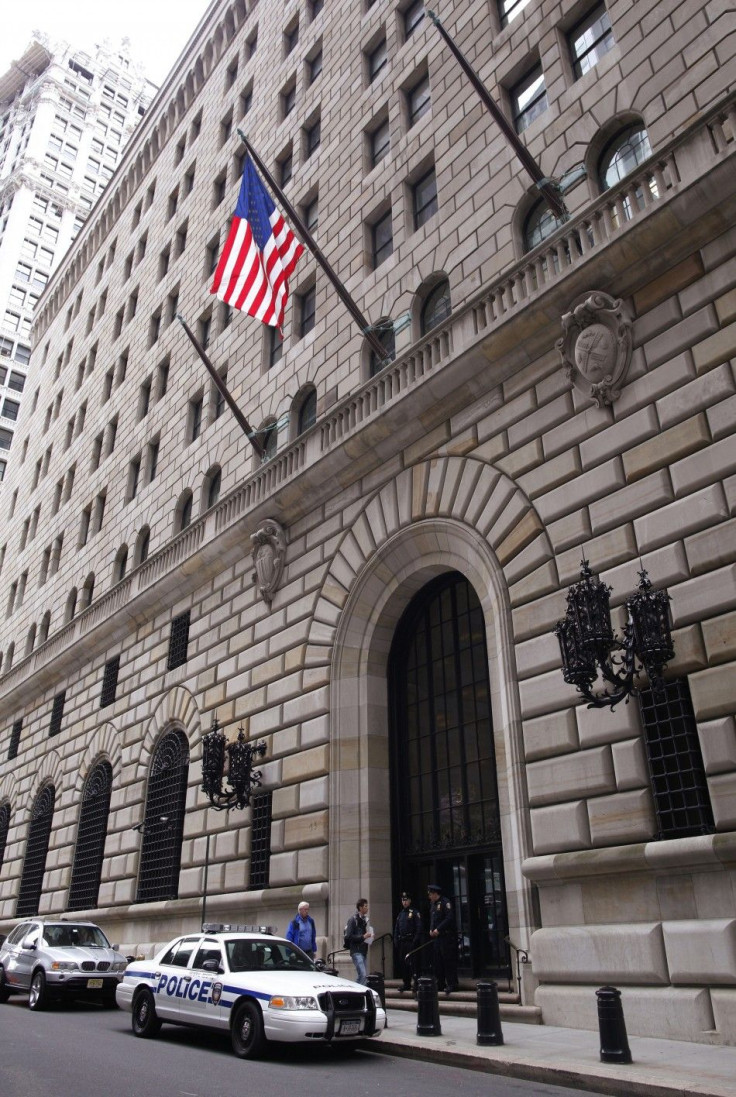Large Banks Uncertain about Economy, Certain about QE3

Some of the nation's most influential financial institutions might not know what U.S. GDP growth, inflation and employment data will look like in 2012, but they do know this: no matter what, the Federal Reserve will be there to keep pumping trillions into the world's financial system.
A survey of primary dealers conducted by the Federal Reserve Bank of New York -- and released to the public Wednesday -- showed a great deal of uncertainty among the 21 large banks that act as counterparties to the Fed's open market transactions, with the survey noting the firms largely admitted their predictions for GDP growth, inflation and the unemployment rate in 2012 were slightly on the optimistic side.
But by the same token, firms were nearly unanimous in believing the U.S. central bank's accommodative zero-interest rate monetary policy would last for at least 30 more months. Furthermore, the survey showed a strong belief that a new round of quantitative easing - the central bank's practice of flooding the financial system with cash by buying up illiquid securities - would occur within the year: the median view held the possibility of this happening in the next 12 months was 60 percent.
The survey of economic indicator predictions, to which 19 of the firms the Fed contacted responded, showed a media assessment that U.S. GDP will grow 2.1 percent next year, inflation will remain a tame 1.7 percent and unemployment will move down ever so slightly to 8.7 percent of the workforce. (As of the last quarter just ended, consensus predictions are of 1.6 percent annualized GDP growth, 2.6 percent inflation, and 8.9 percent unemployment).
But those predictions, the dealers responding to the survey, have significant downside risk. Ten dealers admitted their GDP projections had more downside than upside risks, with 8 saying their calculations on GDP growth were more uncertain than they had been in late October, when the last survey was taken. Six said the same for their inflation estimates, while seven said it was likely the unemployment rate would be higher than their forecast.
"Most respondents cited the eurozone sovereign debt and banking situation as a major source of downside risk to their forecasts. Many also mentioned uncertainty concerning the U.S. fiscal situation," a note to the survey said. "A couple of dealers cited fluctuations in the labor force participation rate as a source of uncertainty in their unemployment forecasts."
The tenuous view of their own forecasting abilities did not extend to their predictions on the actions of the U.S. central bank, however, with the median response asserting they did not see the Fed raising interest rates until the second quarter of 2014. Previous statements from the bank have noted a commitment to keep interest rates at current levels until mid-2013.
Out of the firms that answered the survey question, the median probability that the Federal Reserve would "expand SOMA portfolio through security purchases," or engage in a new round of quantitative easing this year was pegged at 60 percent. Even more remarkably, the median probability that the Fed would be providing even more guidance "on the path of the federal funds rate" was put at 80 percent.
It turns out the dealers were right on that last point. On Tuesday, the Fed said it would be incorporating such guidance into quarterly economic forecasts.
© Copyright IBTimes 2024. All rights reserved.




















